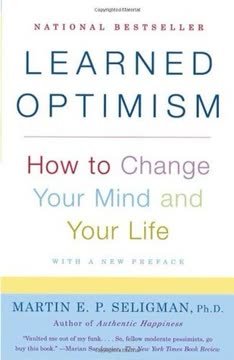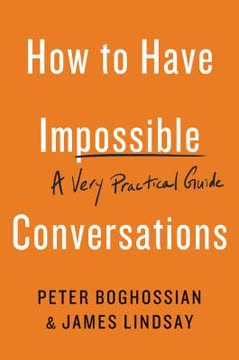Key Takeaways
1. Positivity opens our minds and broadens our perspective
Positivity opens us. It allows us to consider possibilities that are otherwise hidden from view.
Expanded awareness. Positive emotions like joy, gratitude, and interest broaden our mindset and attention. This allows us to see more possibilities, think more creatively, and make new connections. Studies show that inducing positive emotions leads to better problem-solving and more flexible thinking. For example, people in positive moods perform better on tests of creativity and see more potential uses for everyday objects.
Openness to new experiences. Positivity makes us more open to new people, ideas, and opportunities. It counteracts our tendency to fall into rigid patterns of thought and behavior. This openness creates an upward spiral - as we experience more positivity, we become more receptive to positive experiences, leading to even more positivity over time.
2. Positivity builds lasting resources and transforms us for the better
Positivity spells growth. It sets you on a trajectory toward becoming a better person.
Building personal resources. The benefits of positivity accumulate and compound over time, leading to lasting improvements across multiple life domains:
- Psychological resources: Optimism, resilience, sense of identity
- Social resources: Strong relationships, social support networks
- Physical resources: Improved cardiovascular health, immune function
- Cognitive resources: Creativity, problem-solving skills, mental flexibility
Long-term transformation. Positivity doesn't just make us feel good momentarily - it transforms who we are over time. As we experience more positive emotions, we develop new skills, form stronger relationships, and become more resilient versions of ourselves. This transformation allows us to thrive and reach our full potential.
3. The 3-to-1 positivity ratio is the tipping point for flourishing
The 3-to-1 positivity ratio may well be a magic number in human psychology.
The tipping point. Research suggests that experiencing at least three positive emotions for every negative emotion is the critical threshold for flourishing. This 3-to-1 ratio appears to be the inflection point where people shift from languishing to thriving.
Balance, not elimination. The goal isn't to eliminate all negative emotions, which serve important functions. Rather, it's to cultivate enough positivity to outweigh negativity. People who achieve this ratio tend to:
- Be more creative and resilient
- Have stronger relationships
- Experience greater overall well-being and life satisfaction
Measuring your ratio. You can track your own positivity ratio using tools like mood diaries or the author's online assessment. Aim for a 3-to-1 ratio over time, not necessarily every single day.
4. Positivity fuels resilience and helps us bounce back from adversity
Positivity is perhaps the best-kept secret of people who, against all odds, keep on bouncing back.
The reset button. Positive emotions act as a psychological reset button, helping us recover more quickly from stress and negative experiences. They broaden our perspective, allowing us to see beyond immediate problems and find creative solutions.
Building resilience. People who experience more positive emotions become more resilient over time. They develop:
- Greater emotional flexibility
- Stronger coping skills
- More optimistic thinking patterns
- Larger support networks to draw upon in tough times
Post-traumatic growth. Positivity doesn't just help us return to baseline after adversity - it can lead to personal growth. Many people report becoming stronger, more appreciative, or finding new meaning in life after overcoming challenges with a positive mindset.
5. We can cultivate positivity through daily practices and mental habits
Life gives us negativity on its own. It's our job to create positivity.
Intentional practices. We can actively increase our positivity through simple daily habits:
- Keeping a gratitude journal
- Performing acts of kindness
- Savoring positive experiences
- Practicing mindfulness
- Connecting with others
- Engaging in activities that bring joy or meaning
Cognitive strategies. Our mental habits significantly impact our emotional state. Techniques to cultivate more positive thinking include:
- Reframing negative situations to find silver linings
- Challenging overly pessimistic thoughts
- Focusing on solutions rather than problems
- Practicing self-compassion
Consistency is key. Small, consistent efforts to increase positivity are more effective than sporadic large gestures. Make positivity-boosting activities a regular part of your routine for lasting change.
6. Positivity is contagious and strengthens our social connections
Positivity knows no boundaries. It runs between us as much as it runs within us.
Emotional contagion. Our emotions influence those around us through facial expressions, body language, and tone of voice. Positive emotions are particularly contagious, creating ripple effects through our social networks.
Strengthening relationships. Positivity enhances our social connections in several ways:
- Makes us more approachable and likable
- Increases our empathy and compassion
- Improves communication and conflict resolution skills
- Builds trust and cooperation
Creating upward spirals. As we share positivity with others, it creates mutual uplift. This can lead to upward spirals in relationships and communities, where positivity becomes self-reinforcing and spreads to others.
7. Mindfulness and meditation enhance positivity and well-being
Mindfulness means paying attention in a particular way: on purpose, in the present moment, and nonjudgmentally.
Present-moment awareness. Mindfulness practices help us cultivate non-judgmental awareness of our thoughts, emotions, and surroundings. This awareness allows us to:
- Recognize and savor positive experiences more fully
- Reduce rumination on negative thoughts
- Respond to situations more skillfully, rather than reacting automatically
Meditation benefits. Regular meditation practice has been shown to:
- Increase positive emotions
- Reduce stress and anxiety
- Improve focus and cognitive function
- Enhance emotional regulation
Loving-kindness meditation. This specific form of meditation, focused on cultivating feelings of love and compassion, is particularly effective at boosting positive emotions and social connection.
8. Gratitude and savoring amplify positive emotions
Truly cherish the event, and its benefits to you will grow.
The power of appreciation. Gratitude is one of the most potent positive emotions. Regularly practicing gratitude has been shown to:
- Increase overall life satisfaction
- Improve physical health
- Strengthen relationships
- Enhance resilience
Savoring techniques. We can amplify positive experiences by savoring them more fully:
- Pay close attention to sensory details
- Share the experience with others
- Take mental photographs or physical mementos
- Congratulate yourself on the experience
- Avoid overanalyzing, which can dampen positive emotions
Creating positivity portfolios. The author suggests creating "portfolios" for different positive emotions, filled with mementos, quotes, or images that evoke those feelings. These can serve as powerful tools to reconnect with positivity when needed.
9. Finding meaning and purpose increases positivity and life satisfaction
Let us be grateful to people who make us happy, they are the charming gardeners who make our souls blossom.
The role of meaning. Having a sense of purpose and meaning in life is strongly associated with greater positivity and overall well-being. This can come from:
- Contributing to something larger than oneself
- Aligning actions with personal values
- Setting and working towards meaningful goals
- Finding opportunities for growth and self-actualization
Creating a personal mission. The author suggests developing a personal mission statement to clarify your purpose and values. This can serve as a compass to guide decisions and actions, leading to greater fulfillment and positivity.
Positive institutions. We can create more positivity by building and supporting institutions that foster meaning and purpose, such as:
- Schools that nurture students' strengths and passions
- Workplaces that emphasize employee growth and contribution
- Communities that encourage civic engagement and connection
Last updated:
FAQ
What's Positivity by Barbara L. Fredrickson about?
- Focus on Positive Emotions: The book explores the significance of positive emotions in enhancing well-being and resilience.
- Broaden-and-Build Theory: Introduces the broaden-and-build theory, which suggests that positive emotions expand our awareness and encourage creative and flexible thinking.
- Practical Applications: Offers strategies for increasing positivity in daily life to help readers cultivate a more fulfilling and resilient existence.
Why should I read Positivity by Barbara L. Fredrickson?
- Scientific Insights: Grounded in extensive research, the book provides scientific insights into how positivity affects mental and physical health.
- Transformative Potential: It presents a compelling case for how cultivating positivity can lead to personal transformation and improved well-being.
- Actionable Strategies: Offers practical advice and tools to increase positivity, which can lead to flourishing in various aspects of life.
What are the key takeaways of Positivity by Barbara L. Fredrickson?
- Positivity Ratio: Emphasizes maintaining a positivity ratio of at least 3 to 1 for flourishing.
- Resilience and Growth: Positivity helps in bouncing back from challenges and fosters personal growth and resilience.
- Community Connection: Highlights the role of social connections in enhancing positivity and well-being.
What is the Positivity Ratio in Positivity by Barbara L. Fredrickson?
- Definition: The positivity ratio is the frequency of positive emotional experiences divided by the frequency of negative ones.
- Tipping Point: A ratio of 3 to 1 is identified as the tipping point for flourishing.
- Impact on Life: Maintaining this ratio is crucial for psychological health and thriving.
How does positivity transform us according to Positivity by Barbara L. Fredrickson?
- Psychological Growth: Fosters strengths like resilience, optimism, and a sense of purpose.
- Social Connections: Enhances relationships and fosters deeper connections, leading to a supportive community.
- Physical Health: Leads to better health outcomes, including lower stress and improved immune function.
What is the broaden-and-build theory in Positivity by Barbara L. Fredrickson?
- Core Concept: Positive emotions broaden thought-action repertoires, fostering creativity and flexibility.
- Building Resources: These broadened experiences build enduring resources like social connections and resilience.
- Long-term Benefits: The cumulative effects of positive emotions lead to long-term benefits in life.
How can I increase my positivity according to Positivity by Barbara L. Fredrickson?
- Daily Practices: Incorporate gratitude journaling, mindfulness meditation, and joyful activities.
- Social Engagement: Build and nurture social connections to enhance positivity.
- Mindset Shift: Focus on the good in everyday situations to increase positive experiences.
What are some practical exercises from Positivity by Barbara L. Fredrickson?
- Positivity Self Test: Assess your current positivity ratio and identify areas for improvement.
- Meditation Techniques: Guided meditations to cultivate love and kindness, enhancing positivity.
- Reflective Journaling: Journaling about positive experiences and gratitude to reinforce positive emotions.
What are the best quotes from Positivity by Barbara L. Fredrickson and what do they mean?
- "Positivity can uniquely revitalize your worldview": Highlights the transformative power of positive emotions.
- "You can tip the scales to unleash your life's potential to flourish": Emphasizes the agency in cultivating positivity.
- "Positivity is a means toward better ends, not simply an end in itself": Suggests positivity serves a greater purpose in achieving well-being.
How does Positivity by Barbara L. Fredrickson address resilience?
- Resilience Through Positivity: Positivity is key in resilience, helping individuals bounce back from adversity.
- Emotional Agility: Resilient individuals maintain positivity even in difficult times, aiding adaptation and recovery.
- Community Support: Social connections foster resilience, with shared positivity enhancing coping mechanisms.
What role does negativity play in the context of Positivity by Barbara L. Fredrickson?
- Negativity Bias: Negative experiences have a stronger impact, highlighting the need for positivity.
- Appropriate Negativity: Some negativity is necessary for growth; the key is balancing it with positivity.
- Balancing Emotions: Maintaining a healthy balance allows for growth and resilience.
What is the significance of gratitude in Positivity by Barbara L. Fredrickson?
- Boosting Positivity: Gratitude is a powerful tool for increasing positivity and emotional well-being.
- Gratitude Journals: Keeping a journal to record blessings helps shift focus from negativity.
- Strengthening Relationships: Expressing gratitude strengthens social bonds and creates a positive feedback loop.
Review Summary
Positivity receives mixed reviews, with many praising its scientific approach to happiness and practical tips for increasing positivity. Readers appreciate Fredrickson's research-backed methods and the 3:1 positivity ratio concept. Some find the book insightful and life-changing, while others criticize it for being too academic or repetitive. The book's focus on mindfulness, gratitude, and resilience resonates with many readers. However, some struggle with the writing style or find the content lacks novelty compared to other self-help books.
Similar Books










Download PDF
Download EPUB
.epub digital book format is ideal for reading ebooks on phones, tablets, and e-readers.




